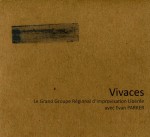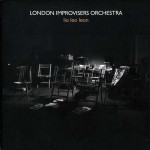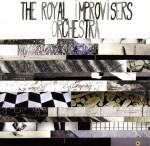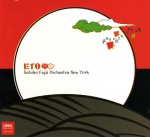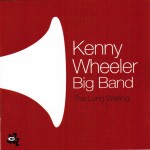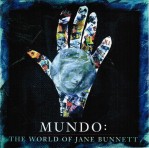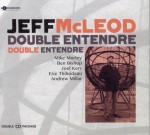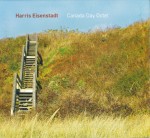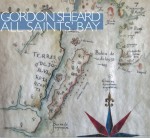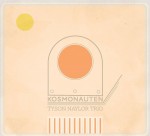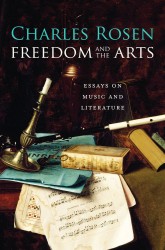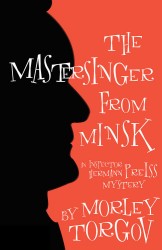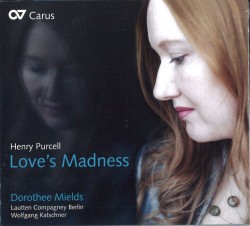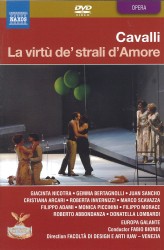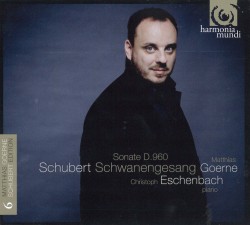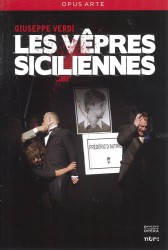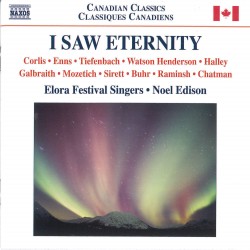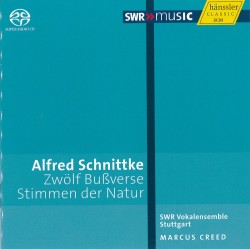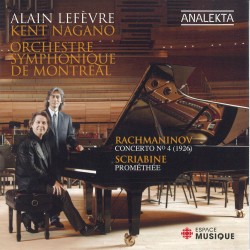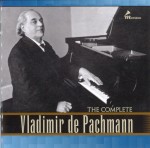 When I first became preoccupied with classical music and buying records of favourite and obscure works, the name Vladimir de Pachmann had already disappeared from current usage and was only recognized by a few of the cognoscenti. His performances were genuinely legendary and sought out by both music lovers and collectors (there is a difference!) but perhaps he was best remembered for his second (1927) recording of the Chopin Etude in G-Flat Major Op.10 No.5 which he introduces and after a few bars is heard to say, “ No … I try it again.” which he does.
When I first became preoccupied with classical music and buying records of favourite and obscure works, the name Vladimir de Pachmann had already disappeared from current usage and was only recognized by a few of the cognoscenti. His performances were genuinely legendary and sought out by both music lovers and collectors (there is a difference!) but perhaps he was best remembered for his second (1927) recording of the Chopin Etude in G-Flat Major Op.10 No.5 which he introduces and after a few bars is heard to say, “ No … I try it again.” which he does.
Born into an era when pianists before the public played only selected works that suited their temperament, it was de Pachmann (Odessa, 1848–1933) who played the entire Chopin oeuvre, introducing his audiences to pieces that they would never have heard. For his debut recitals in New York in 1889–90 he played all-Chopin concerts and finally an orchestral concert featuring the Concerto in F Minor.In the same concert, his wife, Marguérite, made her American debut playing the Liszt Concerto in E-Flat Major!
A remarkable set from Marston (54003-2, 4 CDs)contains every one of de Pachmann’s known recordings, both published and unpublished, beginning with the G&T sides from 1907 through to the 1927 electrical recordings by The Gramophone Company in London. There are 96 performances, including 70 plus of Chopin in addition to works by Mendelssohn, Liszt, Schumann, Brahms and Henselt.
Very soon after actually listeningto the first disc, the realization dawns: each and every work on it is an individual masterpiece, an exquisite performance as if in the intimate salon setting for which it was written. We hear pianissimos that would be unheard in an auditorium. It is inescapable that de Pachmann is listening and responding to the notes that outline the composer’s thoughts. The performances evoke an impression of a delicate mosaic with elements that could fit nowhere else. His artistry remains unique and since then no one has heard his equal.
To cite the highlights of these recordings would be to diminish the others and listeners may wish to compare some performances of the same work made years apart. The transfers to CD are a work of art … no ticks, clicks or swishes, only the steady sssh of the 78 rpm originals with every note clearly heard, even those delicate pianissimos.
It was a great pleasure to audition and review this unique collection that reflects a labor of love by all concerned including the many sponsors. The extensive liner notes are informative, comprehensive and readable, the best I’ve seen. They were written by Edward Blickstein, whose definitive biography of de Pachmann, written with Greg Benko, is expected by the end of this year from Scarecrow Press.
Amazon lists a couple of dozen CDs devoted to, or including, performances by de Pachmann, confirming that he is not forgotten by those who care about the artistry and sensitivity of this pianist whose recordings from a hundred years ago can captivate today’s discerning and receptive music lovers.
 Deutsche Grammophon has assembled a luxurious set of their audio recordings with Herbert von Karajan made in the 1960s titled simply Karajan 1960s (DG 4790055), including 82 CDs, a 200-page book and some recording session data sheets, all in a sturdy eight by eight by six inch presentation box. The CDs are faithful to the original LPs in content, cover art and liner notes. Here are all the celebrated recordings of 40 composers made during what was surely a golden age. The collection has all the orchestral and choral recordings but excludes the many operas.
Deutsche Grammophon has assembled a luxurious set of their audio recordings with Herbert von Karajan made in the 1960s titled simply Karajan 1960s (DG 4790055), including 82 CDs, a 200-page book and some recording session data sheets, all in a sturdy eight by eight by six inch presentation box. The CDs are faithful to the original LPs in content, cover art and liner notes. Here are all the celebrated recordings of 40 composers made during what was surely a golden age. The collection has all the orchestral and choral recordings but excludes the many operas.
Some examples:
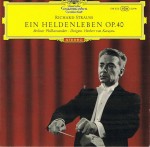 Ein Heldenleben(CD1) was DG’s first recording with Karajan. The sessions, March 2 to 4, 1959, took place in the Jesus-Christus Kirche in Berlin, which was to be the venue of choice for many years. The balance engineer was Günter Hermanns who would be Karajan’s engineer from then on. Ein Heldenlebenbecame a Karajan specialty and this recording was a triumph both artistically and technically. Playing it today is as thrilling as it was over half a century ago. Possibly more so. On a personal note, on January 24, 1965, I was in Constitution Hall in Washington for a concert by the Berlin Philharmonic. A gentleman appeared on stage and announced the death of Winston Churchill and that Mr. von Karajan was dedicating this performance of Ein Heldenlebento his memory. That was both an occasion and a mighty performance to remember.
Ein Heldenleben(CD1) was DG’s first recording with Karajan. The sessions, March 2 to 4, 1959, took place in the Jesus-Christus Kirche in Berlin, which was to be the venue of choice for many years. The balance engineer was Günter Hermanns who would be Karajan’s engineer from then on. Ein Heldenlebenbecame a Karajan specialty and this recording was a triumph both artistically and technically. Playing it today is as thrilling as it was over half a century ago. Possibly more so. On a personal note, on January 24, 1965, I was in Constitution Hall in Washington for a concert by the Berlin Philharmonic. A gentleman appeared on stage and announced the death of Winston Churchill and that Mr. von Karajan was dedicating this performance of Ein Heldenlebento his memory. That was both an occasion and a mighty performance to remember.
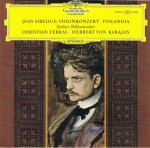 Stravinsky did not care for Karajan’s way with his music but Karajan recorded Le Sacre du Printempstwice, as well as other works included here. The 1964 Sacre(CD15) is opulent and brilliant, and would likely not have conformed to the composer’s acerbic vision. Sibelius, on the other hand, was most enthusiastic about Karajan’s performances of his music. This collection has eight Sibelius CDs including the last four symphonies and the deservedly admired Violin Concertowith Christian Ferras (CD25) plus a sweeping proclamation of Finlandia.
Stravinsky did not care for Karajan’s way with his music but Karajan recorded Le Sacre du Printempstwice, as well as other works included here. The 1964 Sacre(CD15) is opulent and brilliant, and would likely not have conformed to the composer’s acerbic vision. Sibelius, on the other hand, was most enthusiastic about Karajan’s performances of his music. This collection has eight Sibelius CDs including the last four symphonies and the deservedly admired Violin Concertowith Christian Ferras (CD25) plus a sweeping proclamation of Finlandia.
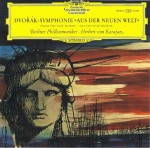 Upon its release, we were all astonished by Karajan’s recording of Dvořák’s “New World” Symphony (CD17). It was notable for the prodigious vitality of the performance with not one tentative moment to dampen the ardor, all heard in dynamic and lucid sound. Recorded in March 1964, it is still artistically and sonically exhilarating (as is Karajan’s unbeatable version of Debussy’s La Mer(CD18) from the same month).
Upon its release, we were all astonished by Karajan’s recording of Dvořák’s “New World” Symphony (CD17). It was notable for the prodigious vitality of the performance with not one tentative moment to dampen the ardor, all heard in dynamic and lucid sound. Recorded in March 1964, it is still artistically and sonically exhilarating (as is Karajan’s unbeatable version of Debussy’s La Mer(CD18) from the same month).
Karajan’s historic first “Beethoven Symphonies” cycle is here plus all the overtures, the Violin Concerto with Christian Ferras (CD47), the Military Marches (CD70) and more. Equally notable are Karajan’s recordings of the four Brahms symphonies (CD19-22), the Violin Concerto (CD23) again with Christian Ferras, the Second Piano Concerto with Geza Anda (CD60) and my favourite version of Ein Deutsches Requiem(CD24) with Gundula Janowitz, Eberhard Waechter and the Wiener Singverein. You can find full details of this collection at www.deutschegrammophon.com/cat/single?PRODUCT_NR=4790055.
No one would expect that every recording by this artist, or in fact any artist, would or could be a universal favourite. Besides, what we dislike today we may like tomorrow. And the reverse is equally true.
Soon after Karajan’s death, an orchestra member was quoted as saying that, forced to choose between truth and beauty, Herbert von Karajan chose beauty.
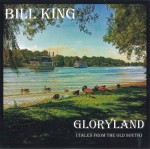 Gloryland (Tales from the Old South)
Gloryland (Tales from the Old South)

